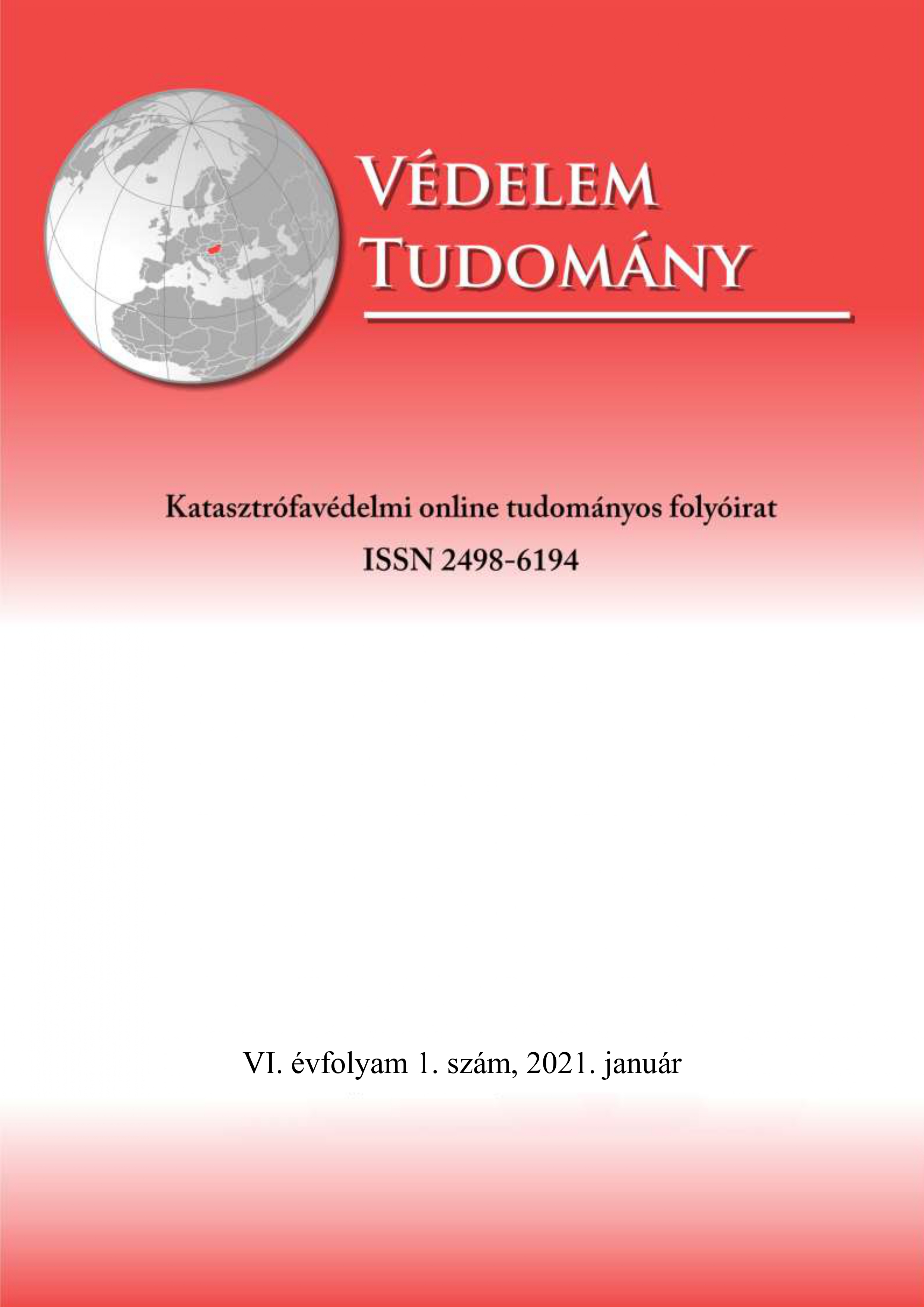Introduction and risk reduction of microplastics
Abstract
Nowadays received more attention in the drinking water in the course of the researches in the past years mikroplastics and it is effects caused on health. The WHO established it in 2019 that the mikroplastics all physical, all chemistry and a microbiological risk is presented for the living world, since the mikroplastics particles has the possibility to get into the organization of the living beings and they may get into the foods. These particles may get into the air, surface waters and a drinking water. Managed to get into the environment mikroplastics, mikropolluting the conditions of the animal or vegetal vital processes and the water the applicability of truth is reduced for a man, it may be brought to an end possibly. The analysis of these substances getting into environment is important for the effect of his survey and the polluters has on health for our society. The plastic substance of which use can be made very multi-faceted, his production are relatively cheap. The author of this article would like to review the environmental occurrence of micro-plastics and their water safety moreover health risks and also presentation of mikroplastics research in Hungary.
References
MTA. ÖKVK. Csoportja: A Nemzeti Víztudományi Kutatási Program Kihívásai és Feladati, Budapest: MTA, pp. 1-67., pp. 27-30.(2018)
KUTASI Csaba: A műanyagok-textiles szemmel is, Vegyipar és Kémiatudomány, LXXV. ÉVFOLYAM 6. SZÁM, DOI: 10.24364/MKL.2020.06 pp.178-181. (2020)
BORDÓS Gábor et all.: „Mikroműanyagok a környezetben és a táplálékláncban,”Élelmiszervizsgálati közlemények, kötet 2., pp. 1020-1037,.LXXII. évf. 2. szám, pp.1020-1037., 1025 p., (2016)
KUTASI Csaba: A mikroműanyagok textiles szemmel is, Művelődés-, Tudomány-, és Orvostörténeti Kiadvány, Kötet: 2019/19, DOI: 10.17107/KH.2019.19. pp.178-181., 180 p.(2019)
KUTASI Csaba: Vegyipar és Kémiatudomány, A műanyagok-textiles szemmel is. LXXV. ÉVFOLYAM 6. SZÁM, 2020. Június, DOI: 10.24364/MKL.2020.06., pp. 190-203., 197 p.(2020)
BORDÓS Gábor et all.: „Mikroműanyagok a környezetben és a táplálékláncban,”Élelmiszervizsgálati közlemények, Kötet 2, 2016.LXXII. évf. 2. szám, pp. 1020-1037., 1025 p., (2016)
KASHWIDAS et all.: Distribution of Nanoparticles int he See-through Medaka( Oryziaslatipes;EnvironHealt Perspect.114(11), pp. 1697-1702, (2006)
SVIGRUHA Réka, Fodor István, Maász Gábor, Szoboszlay Sándor, Bordós Gábor, Pirger Zsolt: Jelölt mikroműanyagpartikulumok körforgása vízi teszt szervezetekben, A Magyar Ökotoxikológia IX 2019. konferencia, Poszter (2019)
MICHAEL Scheurer, Moritz Bigalke Environ: Microplastics in Swiss Floodplain Soils, Sci. Technol. 2018, 52, 6, Publication Date:February 15,pp. 3591–3598. (2018)
MATTHIAS C. Rilling et all.: Microplastic in terrestrial ecosystems, Science 2020, Vol 368, 6, Publication Date: 26 Jun. 2020. pp. 1430-1431.(2020)
MANI, T., Hauk, A., Walter, U., Burkhardt- Holm, P.: Microplastics profile along the Rhine River. Scientific Reports 5. Article number: 17988.pp. 1-7., (2015)
Friss kutatás bizonyítja: a dunai víz mikroműanyaggal szennyezett (2020):
12.12)
Friss kutatás bizonyítja: a vizeink mikroműanyaggal szennyezettek (2020): https://www.greenpeace.org/static/planet4-hungary-stateless/2020/04/3b7559c8-
_greenpeace___2020_k_00918___mikromuanyag_vizsgalat_ivoviz.pdf (letöltés:
12.12)
AZ EURÓPAI BIZOTTSÁG: A bizottság közleménye az európai parlamentnek, a tanácsnak, az európai gazdasági és szociális bizottságnak és a régiók bizottságának. A műanyagok körforgásos gazdaságban betöltött szerepével kapcsolatos európai stratégia,Strasbourg, 2018.1.16, COM (2018) 28 final, pp. 1-22. (2018)
KIERAN D. Cox, Garth A. Covernton, Hailey L. Davies, John F Dower, Francis Juanes, Sarah E. Dudas: Supplementary Materials for Human Consumtion of Mikroplastics, 2019.06.05., pp. 7068-7074.(2019)
SCHWABL P, Köppel S, Königshofer P, Bucsics T, Trauner M, Reiberger T, Liebmann B.: Detection of Various Microplastics in Human Stool: A Prospective Case Series. Ann Intern Med. 2019 Oct 1; 171(7):453-457. doi: 10.7326/M19-0618. Epub 2019 Sep 3. PMID, pp. 453-457. (2019)
WRIGHT, S.L., Thompson, R.C. , Galloway, T.S.: The physical impacts of microplastics on marine organisms: A review. Environ Pollut. 178, pp. 483-492. (2013)
EURÓPAI BIZOTTSÁG: ZÖLD KÖNYV a környezetben található műanyaghulladékokkal kapcsolatos európai stratégiáról, Brüsszel, 2013.3.7., COM(2013) 123 final, pp. 1-24., 7 p. (2013)
HUERTA Fontela Mm, Galceran Mt, Ventura F.: Occurance and removal of pharmaceuticals and hermones through drinking water treatment. Water Research 2011 Jan;45(3): doi: 10.1016/j.watres., pp. 1432-1442. (2011)
BOLEDA M.R., Galceran M. T, Ventura F: Behavior od pharmaceuticals and drugs of abuse in drinking water treatment plant(DWTP) using combined conventional and ultration and reverse osmosis (UF/RO) treatments. Environmental Pollution, 2011. április 2, 159 (6): pp. 1584-1591.(2011)
PARRAG Tamás Károly: A vízbe kerülő mikroszennyezők és mikroműanyagok kockázatának csökkentése, III: Tolna Megyei Polgári Védelem Munkaműhely Katasztrófák, kockázatok, önkéntesek tanulmánykötet 2019., pp. 22-36. (2019)
CALVITA J., Mikola A.,Koistinen A, Setala O.: Solutions to microplastic pollution –Removal of microplastics from wastewater effluent with advanced wastewater treatment technologies, Water Res. 123, 2017.07.pp. 401-407.(2019)
DRIS R.et all.: Synthetic fibers in atmospheric fallout: a source of microplastics in the environment? Marine Pollution Bulletin, 104 (1-2), 290-293.p. (2016)
KÁTAI-URBÁN Lajos SIBALINNÉ, FEKETE Katalin ; VASS, Gyula. Hungarian Regulation On The Protection Of Major Accidents Hazards. (2016) JOURNAL OF ENVIRONMENTAL PROTECTION, SAFETY, EDUCATION AND MANAGEMENT
-5270 2453-9813 4 8 83-86
ALMÁSI Csaba, CIMER Zsolt, KÁTAI-URBÁN Lajos: Mezőgazdasági felhasználású veszélyes áruk közúti szállítási tapasztalatai, VÉDELEM TUDOMÁNY: KATASZTRÓFAVÉDELMI ONLINE TUDOMÁNYOS FOLYÓIRAT V: 2 pp. 118-136., 19 p. (2020)
A vízszennyező anyagok kibocsátásaira vonatkozó határértékekről és alkalmazásuk egyes szabályairól, 28/2004. (XII. 25.) KvVM rendelet.
A szennyvizek és szennyvíziszapok mezőgazdasági felhasználásának és kezelésének szabályairól, 50/2001. (IV. 3.) Korm. rendelet.
A veszélyes anyagokkal kapcsolatos súlyos balesetek elleni védekezésről, 2011.évi 219/2011. (X. 20.) Korm. rendelet
HORVÁTH Hermina, KÁTAI-URBÁN Lajos. Veszély-elhárítási tervezés a vasúti rendező-pályaudvarokon. (2013) VÉDELEM - KATASZTRÓFA- TŰZ- ÉS POLGÁRI VÉDELMI SZEMLE 1218-2958 XX 2 16-18.
MTA Ökológiai Kutatóközpont Víztudományi Koordinációs Csoportja: A NEMZETI VÍZTUDOMÁNYI KUTATÁSI PROGRAM KIHÍVÁSAI ÉS FELADATAI. Budapest: MTA, 2018., pp. 1-67., pp. 5-32.




